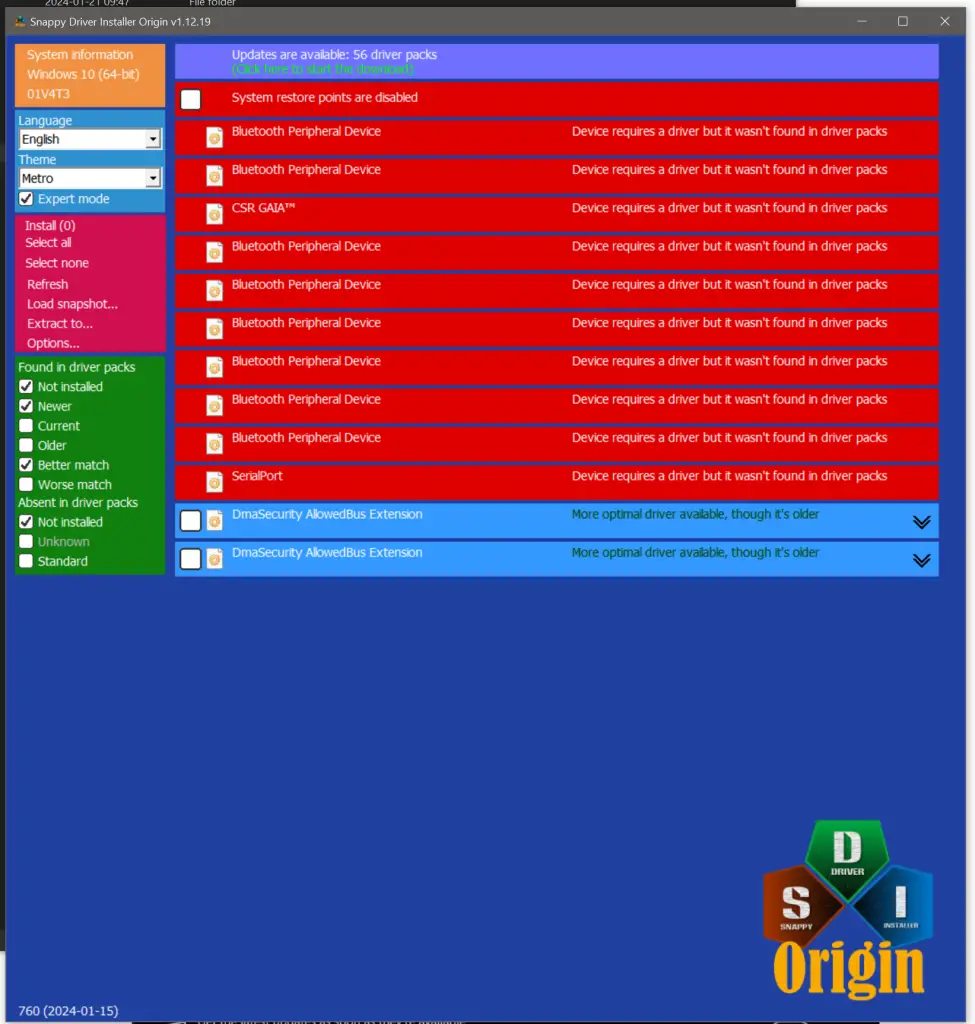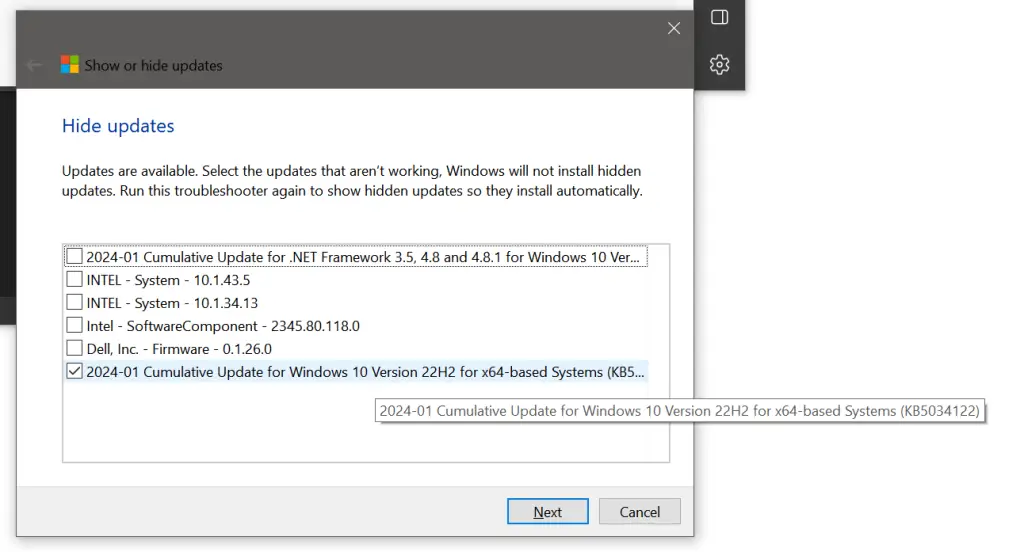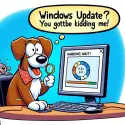Did you start experiencing weird input lag on your Windows 10 PC starting some time early 2024? This lag would take 1-6 seconds, during which your mouse and/or touch devices (touch screen or touch pad) would be completely unresponsive. Keyboard would work, though.
Good. That means I wasn’t the only one. 😅
Don’t get me wrong! I’m sorry you have issues with your computer. But I’m just happy I have some co-sufferers – and I’m happy to tell you I found the solution, and I’ll share it to you in this article!
Anyway. Let’s take a closer look at the issue first, shall we?
Problem
So I’m still running Windows 10, as I don’t like the way Clippy looks at me when he tries to convince me to update to Windows 11. Additionally, Windows 11 still doesn’t seem to support moving the taskbar to the side of the screen – apparently it’s another feature only used by a tiiiiiny subset of user base, so it’s safe to ignore us. Just like it’s safe to ignore the weirdos using browser bookmarks, keyboard shortcuts in any apps, or the really odd ones passing arguments to applications on startup. Expect Microsoft to disable all of those “practically unused” features in Windows 12, too, as we’ll all just be talking to Clippy-on-steroids (Copilot) to do whatever menial work tasks we need to achieve during the day anyway.
Ah, but that’s enough ranting for one article. I’m on Windows 10 22H2, and my laptop has been surprisingly stable (I’ve seen one bluescreen in the last 2 years!), but this week I finally started to experience some classical Windows problems.
Namely, incredibly aggressive mouse “stuttering”, or perhaps “unfreeze input lag” anytime I let the mouse cursor stay in place for more than a second. Getting it to move again required 1-6 seconds of waiting for the system to become responsive again. And some incredibly aggravated mouse shaking, of course.
I mean, I’m not sure if the shaking was required, but it sure came very naturally. Maybe it did help.
Keyboard was functional all the time, though, but I honestly don’t remember how to do all of the things by the way of keyboard shortcuts, so I was stuck waiting a few seconds any time I wanted to do something with my mouse.
Incredibly annoying after a few hours, I’ll tell you that much.
This issue started on the evening of 18.1.2024. I figured it was probably a recent Windows Update causing the issue, as I accidentally let Windows restart itself (I swear it feels like rebooting is the source of most of my woes), and after booting up, the machine was practically unusable.
Reason
The actual reason is unclear, but likely it’s a combination of some outdated or buggy drivers (I could reproduce the issue after fixing it by installing updates with Dell Command – and it is surprisingly aggressive at downgrading at least my display drivers, downgrading the driver for my Nvidia rtx 3050 Ti to a version a few weeks older than what was current).
That said, there was nothing useful in Windows Event log, and the issue was not resolved by running Windows Update or Dell Command again or restarting the machine 5 times in a row. Even shutting down OneDrive or Realtek services didn’t help (despite SO MANY different issues being resolved that way!), so I knew I was in for some real pain this time.
Long story short, I started the process by upgrading all drivers to the latest ones (details follow later in the article) and started removing my Windows Updates one-by-one, restarting the machine and trying if the issue was resolved.
You might have anything from 0 to a couple dozen updates that have been installed after your issue started, but you can probably ignore anything other than updates to “Microsoft Windows”, and of course narrow it down by date. Below, you can see my situation. Knowing when the issue started already narrows me down 2 packages.

The actual culprit seemed to be – surprise, surprise – a Windows Update with name KB5034122. The same update is available with different names for different Windows 10 builds:
Alright – so now we just need to remove the update package, and figure out a way to stop it from coming back.
It’s also noteworthy, that these are LCUs – “Latest Cumulative Updates” – so even if you uninstall and block the problematic update, whatever evil code in it caused the issue will likely be back in a later update. I’m not saying you should block all Windows updates, of course, but keep an eye out for whatever Microsoft releases next month, as it might cause the same issue, and you might need to (at least temporarily) block it again.
Armed with this knowledge – let’s figure out how to patch this issue for good!
Solution
For me, the solution was 3-fold:
1. Remove the offending Windows Update
System > Windows Update > Update History > Uninstall Updates
Easy to do when you know what to remove! And just to remind you: KB5034122, KB5034127, KB5034119 or KB5034134.
2. Update all drivers using SDIO
SDIO is a free tool, and it works wonders. And this is not a paid endorsement (but a free one!) 😀 Download link at the end of the page.
The app itself looks retro – I mean, “Metro” – and makes it super easy to update a couple dozen drivers at once. I was frustrated enough at this point (remember, my operating system was constantly freezing for a few seconds at a time making any update process quite time-consuming!) that I forgot to take a nice screenshot. So here’s a less nice one, showing the drivers that I’m missing (oh, joy…) instead of all the updates I already got (38 of them, to be precise!)

3. Block the update from sneaking back in
Time for the aftercare! You need to block the offending update package from ever being installed on your machine again.
But how do you do that on Windows (short of nuking the whole Windows Update service) nowadays?
Well, if you are an user of WSUS (Windows Server Update Services – essentially a dedicated local update distribution service on a server you control), you can block the update there. But I’m not, so I needed to find a different solution.
Luckily, Microsoft makes this reasonably simple nowadays. You can download a convenient and tool called wushowhide.diagcab (that’s a no-nonsense name if I’ve ever seen one) that lets you “hide” (read: block) any updates that are waiting to be installed.
Download the app, run it, let it search for updates, and you’ll get to a view somewhat like below:

Make sure you’re choosing the right update package (you’ll recognize it by the KB name) and hit “Next”. It’ll take a while, but you should see something like this after:

Now it’s safe to Close the troubleshooter.
And you should be good to go! That evil update should stay away (until it sneaks back in the next monthly LCU!)
Until next time :)
References and links
You can download the Windows Update blocking tool from here: https://download.microsoft.com/download/f/2/2/f22d5fdb-59cd-4275-8c95-1be17bf70b21/wushowhide.diagcab
And the Snappy Driver Installer Original (SDIO) here: https://www.glenn.delahoy.com/snappy-driver-installer-origin/


